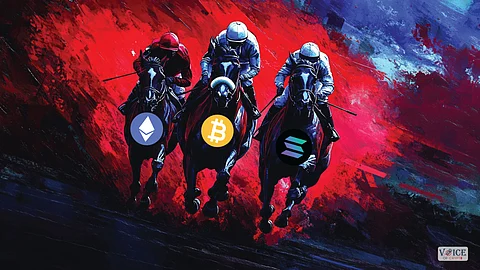

Ethereum, once one of the best-performing cryptos, is now losing ground compared to Bitcoin and Solana.
Solana's memecoin boom and other advancements have attracted users, particularly this year.
Furthermore, Ethereum's spot ETFs have not yet lived up to the hype since their 23 July launch.
However, some analysts believe Ethereum's struggles will end soon, and all of this is a massive buying opportunity.
Ethereum, interestingly, was once the darling of the crypto market.
The cryptocurrency has most market share regarding price movement, hype and a booming ecosystem of memecoins, utility tokens and multi-billion dollar Dapps.
This time, Ethereum still has most of the market share but is becoming less and less popular.
As an illustration, the memecoin boom from the last two cycles happened on Ethereum.
However, Solana has stolen the spotlight this time, with its memecoin platform, Pump.fun seeing a steady growth rate from March until date.
Solana memecoins boom
Dune Analytics data shows that nearly 1.7 million memecoins are deployed via Pump.fun alone, which means that Ethereum is comparatively lower down the scale.
But what about the price?
Ethereum versus Solana and Bitcoin
According to data from Glassnode illustrated in the chart above, Ethereum (purple line) has been trending lower, stuck underneath the $4,000 zone for most of the year with a YTD (year-to-date) price increase of 26.55%.
Ethereum’s line is significantly lower than Bitcoin’s (black line with 58% YTD) and Solana’s (green line with 101% YTD).
This is despite the recent launch of spot Ethereum ETFs in the US and the initial hype surrounding them.
This week during the general market crash on 5 August, Ethereum dropped to its lowest against Bitcoin in the last three years, as shown by the ETH/BTC chart.
We also saw the ETH/BTC pair crash to a year-to-date bottom of -25%, showing a struggle on Ethereum's part.
Ethereum crashing against Bitcoin.
The YTD price has recovered slightly to -19%, but Ethereum’s struggles remain apparent.
We have the same struggle in the chart below, with Solana beating ETH by a YTD price increase of 33.55%—even though most of Solana's gains came from Brazil's newly launched spot ETFs.
Solana gaining against Ethereum.
In summary, Ethereum appears to be struggling to catch up to Bitcoin and is also actively being chased by Solana with its technological advancements and growing adoption.
The lacklustre performance of the ETF market since its launch in late July has also been an issue.
Since the launch of these ETPs, they have witnessed $390 million in outflows, according to data from Farside, which stands as a cold reception compared to the Bitcoin ETFs during their first two weeks of trading on 11 January.
The Ethereum ETF makret performance
Some analysts have even commented on the issue, with financial expert Wesley Kress stating on Tuesday that "Ethereum is not the future."
“This shift challenges the belief that network effects alone would maintain Ethereum's dominance,” Kress noted. "Ethereum is trading horribly this cycle, and I think people are realizing it's not the future.”
The skies look grey for Ethereum—no doubt about that.
But in the crypto market, aren't the greyest clouds one of the biggest signs of sunny days to come?
Some analysts believe that the market is putting too much pressure on the cryptocurrency, especially with its spot ETFs.
One of these is Kaleo, who says that too many people are too focused on the “immediate” effect of the spot Ethereum ETFs.
"It took two weeks after the Bitcoin spot ETF was launched before BTC bottomed out", the analyst said. "There was too much hype about what this ETF would *immediately* do for the price."
The Ethereum ETF launched two weeks ago, and Kaleo believes that if history repeats, something massive might be incoming.
Overall, Ethereum might be trading under some bearish waves at the moment.
However, Ethereum might surprise everyone as the markets continue to move forward and overtake its two biggest competitors without warning.
Disclaimer: Voice of Crypto aims to deliver accurate and up-to-date information but will not be responsible for any missing facts or inaccurate information. Cryptocurrencies are highly volatile financial assets, so research and make your own financial decisions.